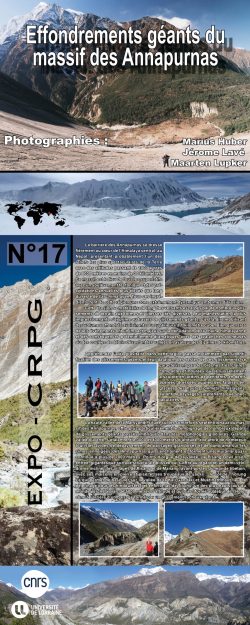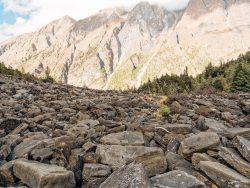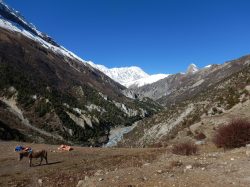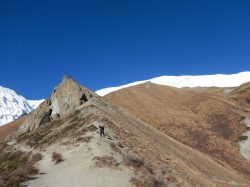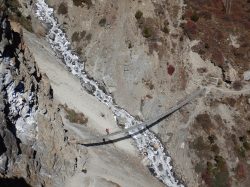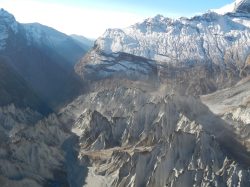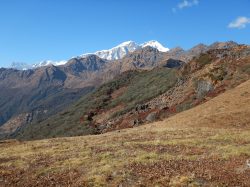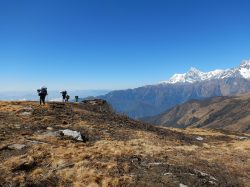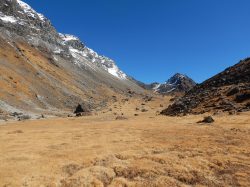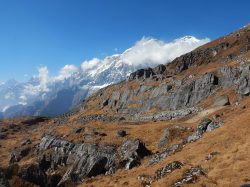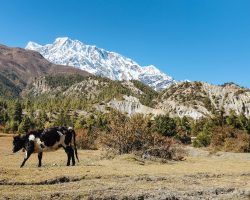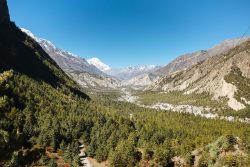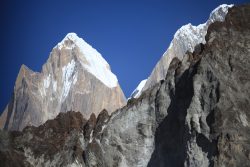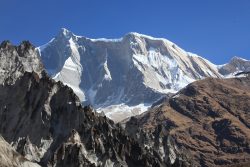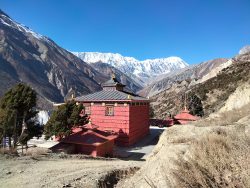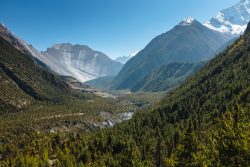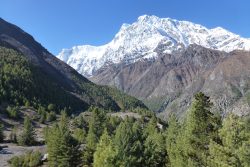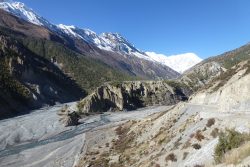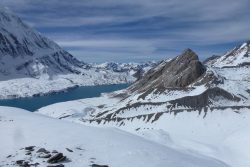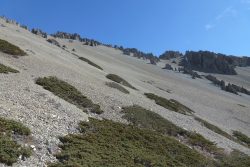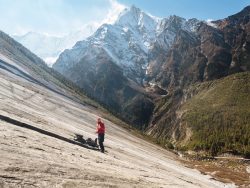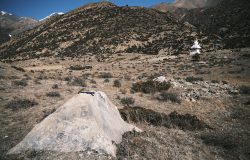Giant Landslides of the Annapurna Massif
Photographs : Jérôme Lavé & Maris Huber
The Annapurna Barrier stands proudly at the heart of central Nepal’s Himalayas, showcasing what is arguably one of the most spectacular landscapes on Earth, with elevations rising from 1,000 to nearly 8,000 meters in less than 30 kilometers. This massif is a place of superlatives, marked by tectonic uplift and annual precipitation levels that exceed those found along the rest of the Himalayan arc. These factors make the region an incredibly dynamic area in terms of erosion.
This erosion manifests along the steep slopes in the form of numerous landslides with diverse shapes and speeds. The most striking of these are giant landslides, which involve collapsed volumes of around or over 1 cubic kilometer. Although rare, such events have a significant impact on the denudation of the Himalayan range and potentially dramatic consequences, with rock avalanches or debris flows devastating downstream valleys over tens of kilometers.
Understanding gravitational hazards in this region requires, among other things, identifying giant landslides and determining their ages. The remnants of these landslides are characterized by very distinctive, compact, and hardened breccias deposit, sculpted by erosion into penitent-like formations, sharp spurs rising at the base of glaciated cliffs of the high Himalayan peaks—landscapes as surprising as they are spectacular.
The upper Marsyangdi Valley, located on the northern side of the Annapurna massif, provides a remarkable record of numerous ancient giant landslide deposits interwoven with glacial morphologies. This broad valley, spreading between 3,000 and 4,000 meters in elevation, attracts many tourists seeking a change of scenery, breathtaking landscapes, and panoramic views of the snow-capped Annapurna peaks that stretch into an almost continuous barrier over 7,000 meters high.
Highlights of the valley include the Pisang Bowl at its entrance, a colossal folded structural surface resembling a tilted half-velodrome; the villages of Pisang and Manang, outposts of the Tibetan world with stone and rammed-earth houses and yak herds; the Thorung La Pass, which allows travelers to cross into the Kali Gandaki Valley and reach Muktinath, a major pilgrimage site for Hindus; and finally Tilicho Lake, one of the world’s highest lakes, perched at nearly 5,000 meters above sea level. This lake formed in the early Holocene behind a natural dam created by a giant rockslide




